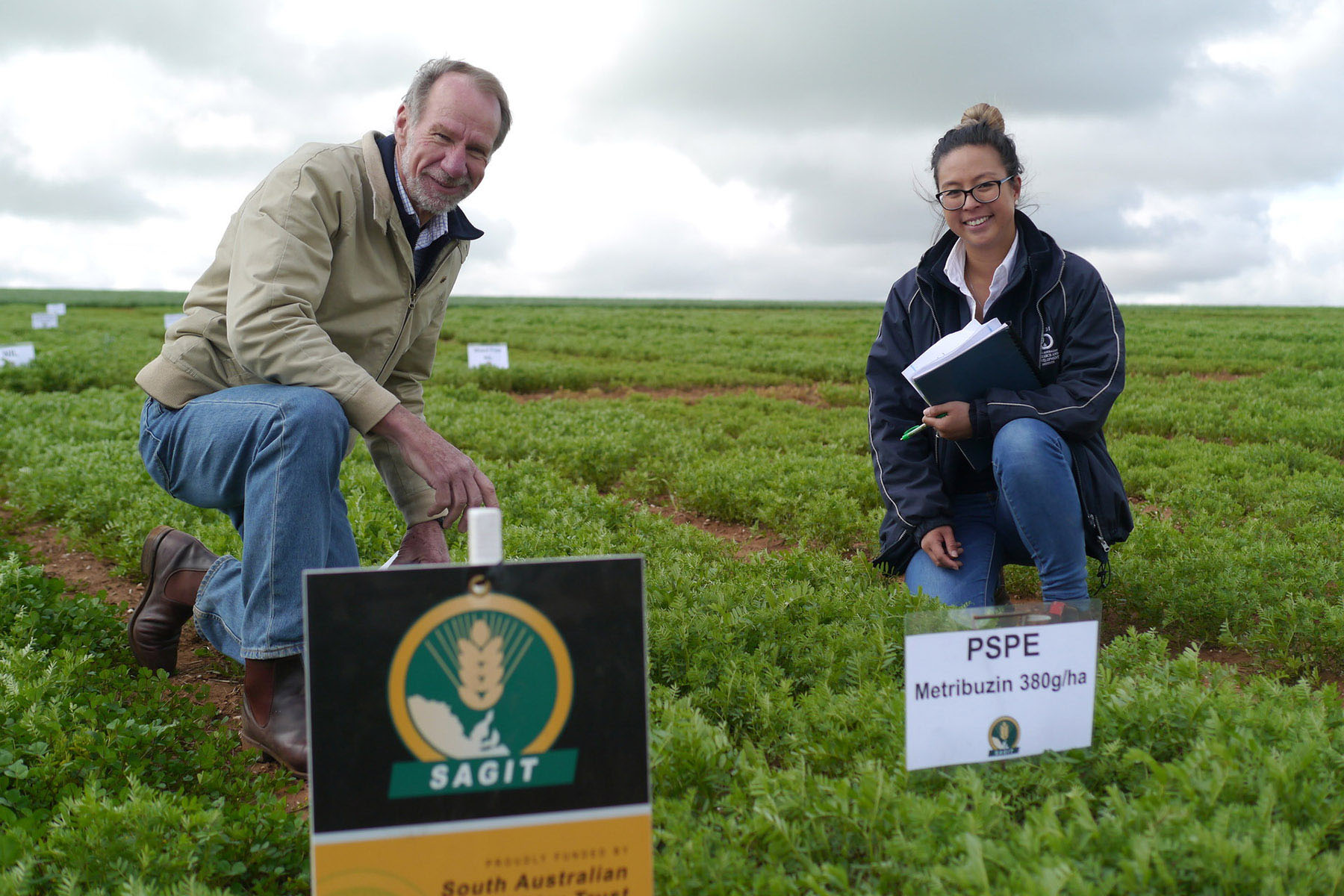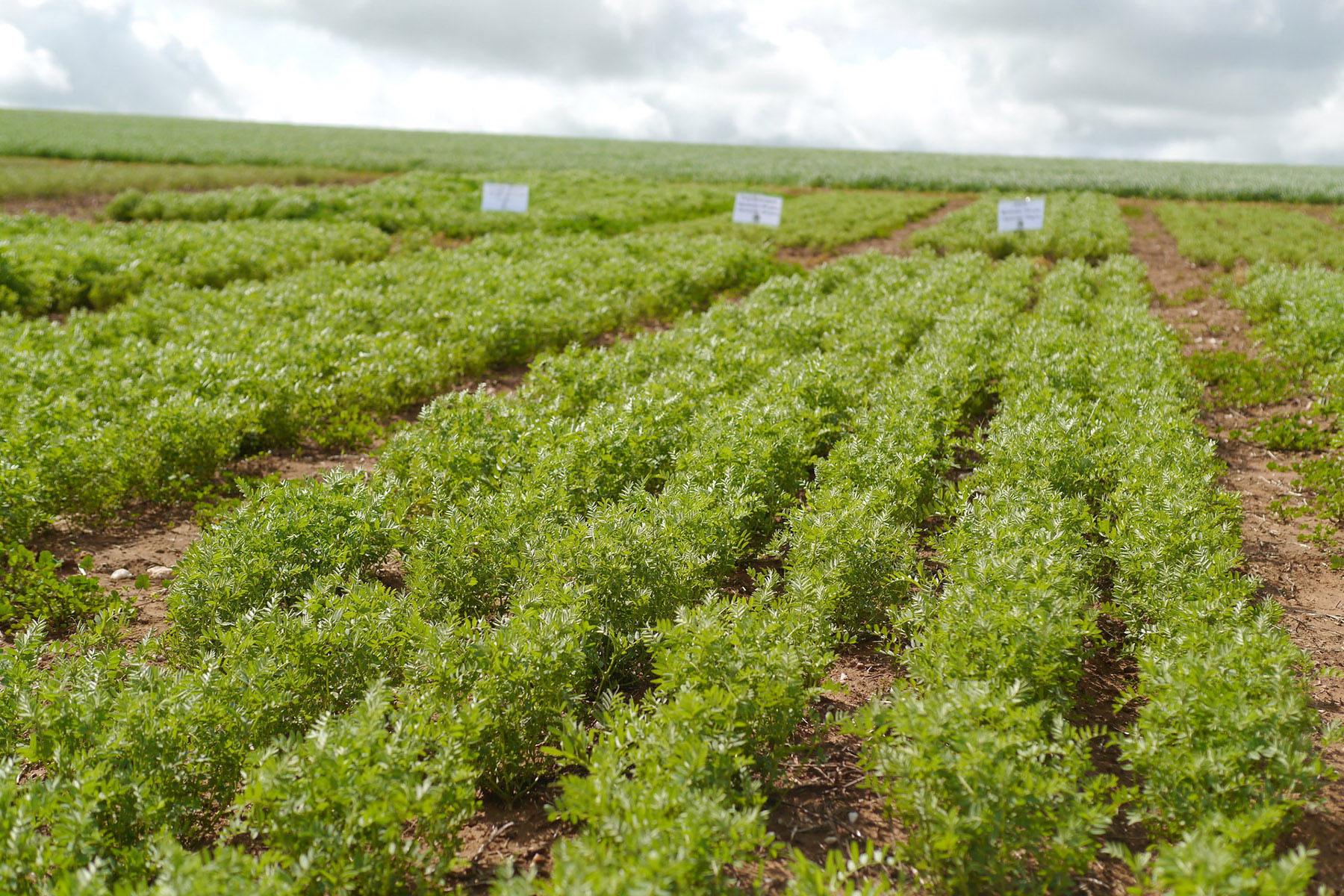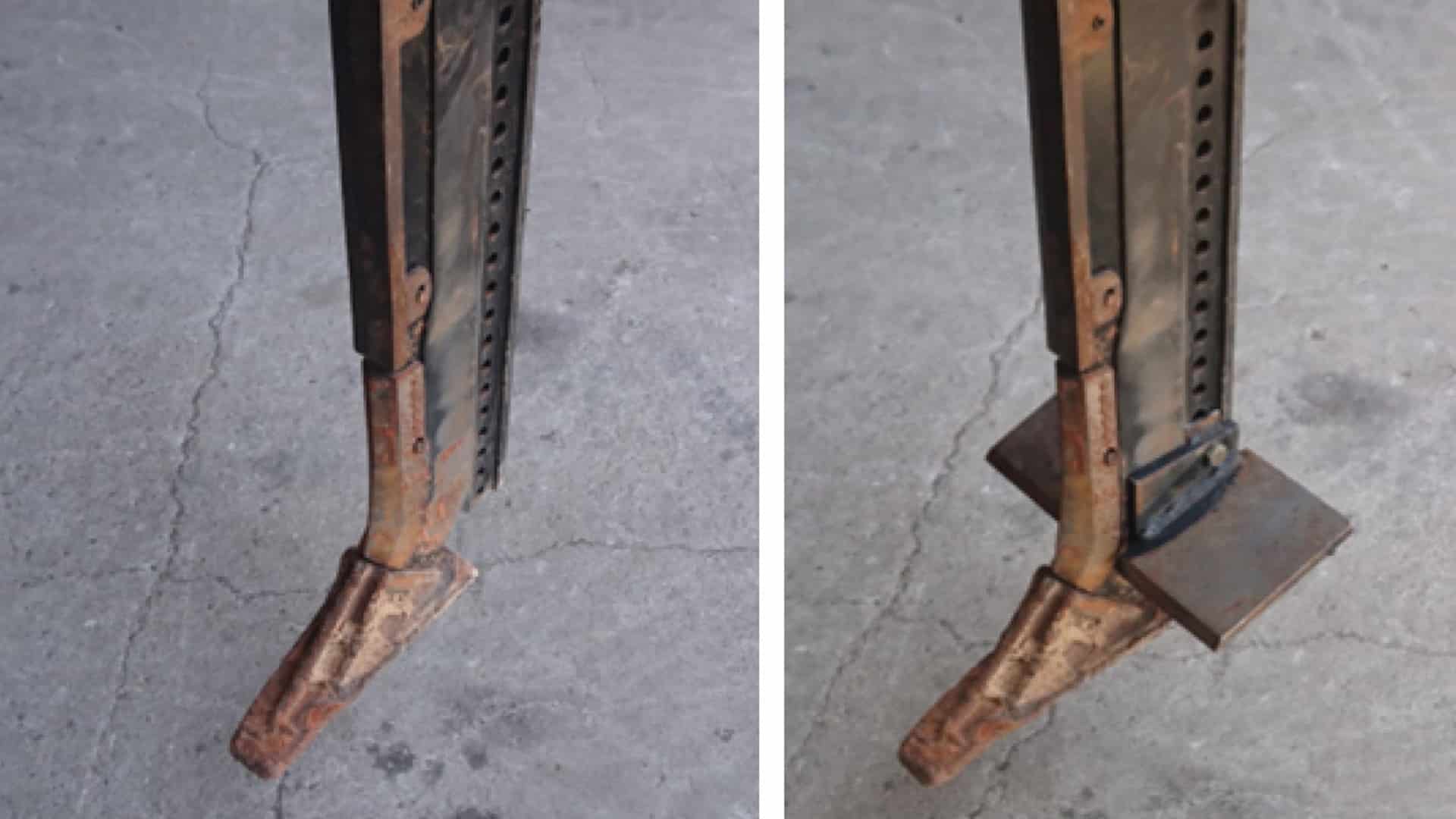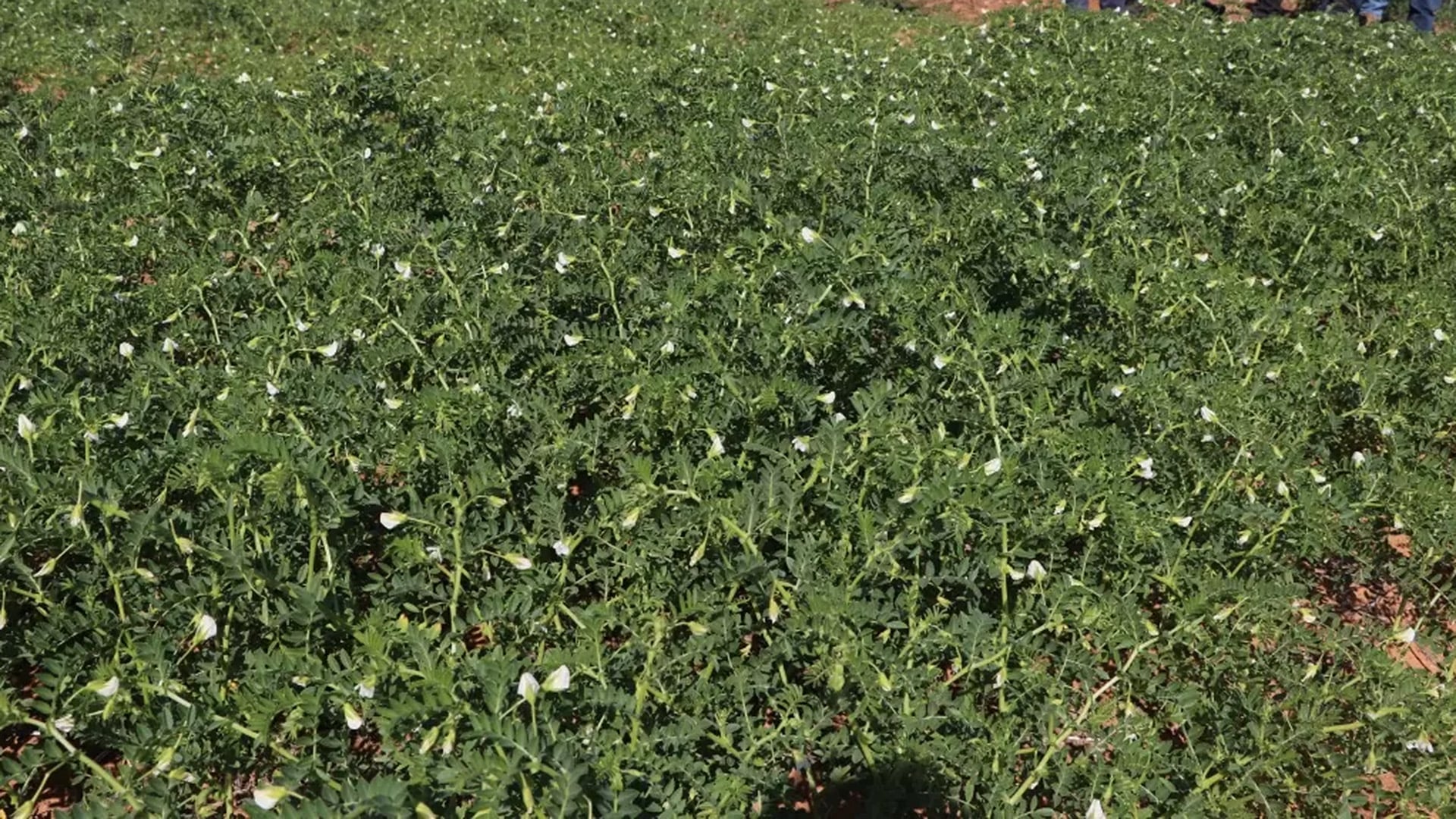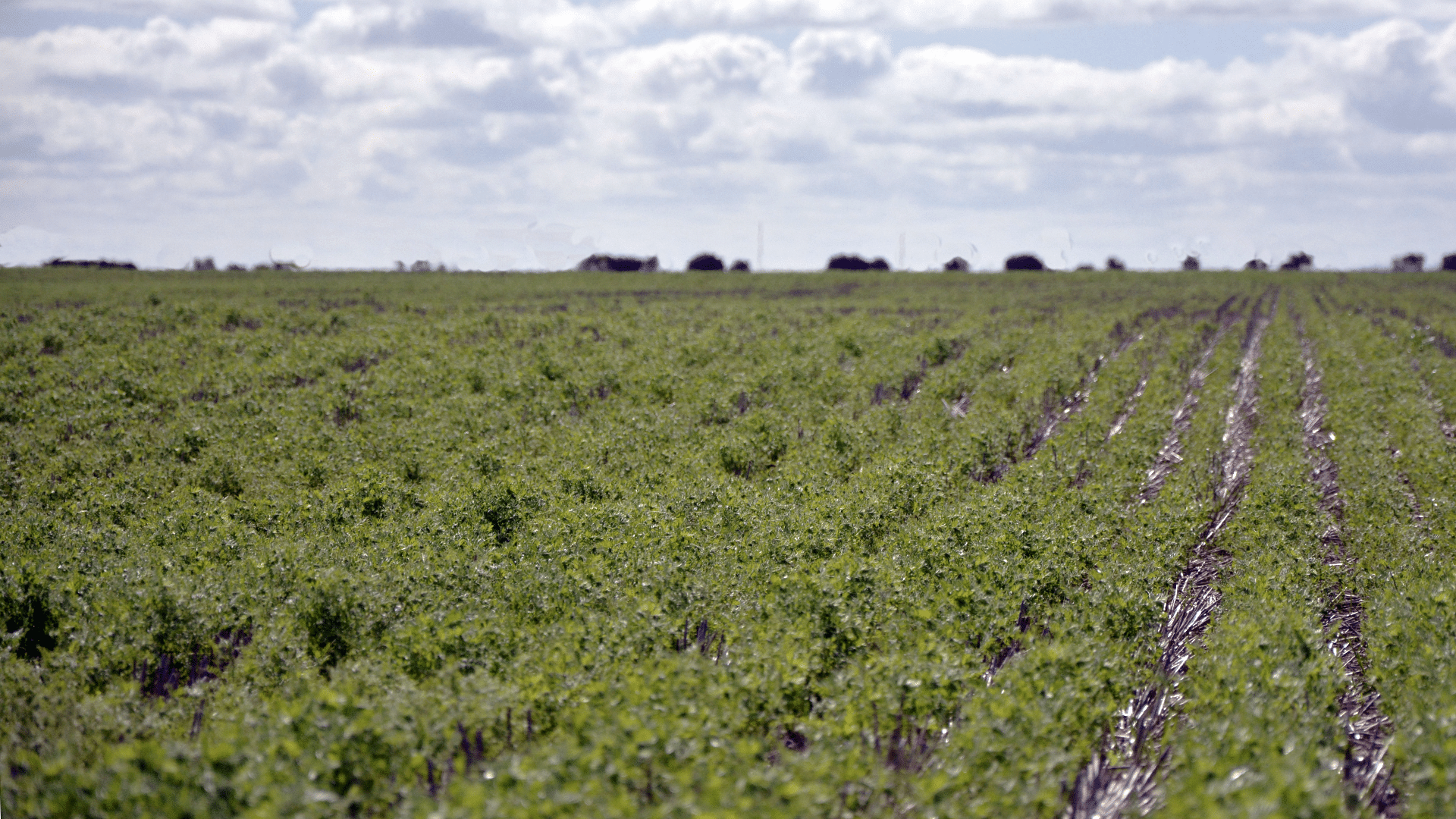START
FINISH

Summary
This project used novel metribuzin applications, alternative timings and mixtures with other herbicides to evaluate the control of problematic weed species in SA lentil production.
This was done in an effort to improve weed control options in SA lentil production.
Results showed that higher rates and post-emergent treatments of metribuzin provided effective control of bifora and medic, with less of an impact on ryegrass. It was also shown that a novel herbicide tolerant lentil germplasm, which could support the use of novel applications, would improve the control of those weeds significantly.
Background
South Australian lentil production is currently limited by an inability to control weeds, particularly late-emerging broadleaf weeds. Those late-emerging broadleaf weeds can contribute to significant costs caused by production losses, seed cleaning and docking grades.
Rapid adoption of herbicide tolerant (HT) XT lentil varieties across SA recently has shown the high demand for HT traits in lentils, but no current registrations provide adequate control of several key weed species. This has resulted in some growers using unregistered herbicides, a major concern in the lentil industry.
Research Aims
The core objectives of the project were to:
• Improve weed control options in South Australian lentil production, particularly for weeds such as Bifora, Vetch and Medic, which are hard to control.
• Evaluate the control of key difficult-to-control weed species in SA lentil production using novel metribuzin applications.
• Assess potential residual effects of the above novel treatments in the following cereal crop.
In The Field
There were five field trials conducted over two years to evaluate the control of problematic weeds using a range of metribuzin treatments.
A novel HT metribuzin germplasm, developed through the GRDC project DAS00131, was sown in 1.75 x 10 metre plots at 120 plants per square metre at all sites. An experimental plot seeder with 0.225m row spacing and 5cm sowing depth was used.
Metribuszin, clethodim and propyzamide were applied in 2016 and 2017 in trials at Turretfield, Kybunga, Arthurton and Thomas Plain. Post-sowing pre-emergent treatments (PSPE) were applied two to three days after sowing and post emergent treatments were applied at the 5-node growth stage.
Crop plant and weed counts were taken at four and six weeks after PSPE treatments and two, four and six weeks after post-emergent treatments, with biomass cuts taken at the time of 50 per cent flowering and grain yield and/or head counts were measured at maturity for lentil and the various weed species present.
Results
The new lentil germplasm with metribuzin tolerance traits (developed through DAS00131) showed a high level of tolerance to Group C herbicide metribuzin, with no visible crop damage caused by the treatments applied.
This improved level of tolerance presents an opportunity to use novel applications of metribuzin in future lentil varieties incorporating these traits, which would help improve broadleaf and grass weed control significantly.
Post-emergent metribuzin treatments improved the control of broadleaf weeds bifora and medic, with an 80-100 per cent reduction in seed set, but a post-emergent timing only provided 20-60 pc reduction in seed set in vetch.
High rates of 750g/ha and post-emergent metribuzin applications were effective in controlling ryegrass and performed similarly to stand alone clethodim treatments.
Study results will be used to support the case for novel metribuzin applications and help with the effective uptake of this new HT technology. Data from this study may also be included in potential registration or label change applications for future lentil varieties incorporating these HT traits.
Project Participants
SARDI: Dili Mao, Tim Sutton
Global Grain Genetics: Larn McMurray
University of Adelaide: Christopher Preston
The Problem
A lack of effective weed control options in South Australian lentil production, particularly for difficult to control weeds like bifora, vetch and medic.
The research
Evaluating the control of key difficult-to-control weed species in South Australian lentil production by using novel metribuzin applications, alternative timings and mixtures with other herbicides.
More information
Dili Mao, SARDI
T: 08 8841 2403, M: 0410 409 950
E: [email protected]
Value for Growers
The development of a novel HT lentil germplasm with a different mode of action (Group C) presents an opportunity to register novel applications of metribuzin in future varieties incorporating new HT traits.
Results from the study have shown that use of higher rates of metribuzin will improve control of a number of problematic broadleaf and grass weeds in SA lentil production, as well as provide an alternative option for the control of Group A resistant ryegrass.
Having a different mode of action for weed control in lentils is important for combating herbicide resistance stemming from current usage patterns and will help protect the longevity of such herbicides. The results of this project have been shared with growers and the industry at field days, as well as farmer and industry meetings.

